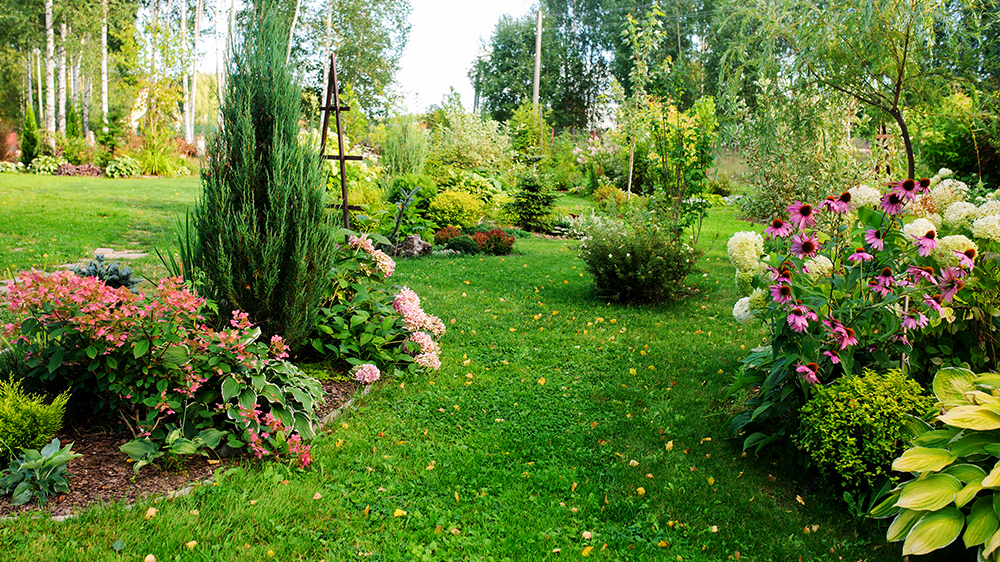How to Plant a Low-Maintenance Perennial Garden: A Guide to Minimal Care Gardens

Imagine a garden that blooms year after year, requiring minimal effort from you. A garden that not only survives but thrives with little water and care. Sounds like a dream? It's not. Welcome to the world of low-maintenance perennial gardens. Let's dive in and discover how to create a beautiful, resilient garden that will be the envy of your neighborhood.
Understanding Perennial Gardens
Perennial gardens are like the reliable friends who are always there for you. Unlike annuals, perennials don't die after one growing season. They return year after year, providing consistent beauty and structure to your landscape. But not all perennials are created equal. For a low-maintenance perennial garden, you'll want to choose hardy, drought-tolerant plants that require minimal care.
Benefits of a Low-Maintenance Perennial Garden
Save Time and Effort
Who wants to spend hours every week tending to a garden? With a low-maintenance perennial garden, you can enjoy the beauty without the constant upkeep. These gardens are designed to thrive with minimal intervention.
Water Conservation
Drought-tolerant plants are the superheroes of the plant world. They can survive and even flourish with less water, making them ideal for low-effort landscaping. This not only saves you money on your water bill but also helps conserve a precious resource.
Year-Round Beauty
Perennial flowers offer a variety of colors, textures, and heights, creating a dynamic landscape that changes with the seasons. With careful planning, you can have a garden that blooms from spring to fall.
Planning Your Low-Maintenance Perennial Garden
Choose the Right Location
Before you start planting, consider the location. Most drought-tolerant plants prefer full sun, so choose a spot that gets at least 6 hours of sunlight a day. Also, consider the soil type and drainage. Plants like lavender and rosemary prefer well-drained soil, while others can tolerate more moisture.
Select Hardy Perennials
When selecting plants, look for those labeled as drought-tolerant or low-maintenance. Some popular choices include:
- Lavender: Known for its fragrant flowers and low water needs.
- Russian Sage: A tough plant that produces beautiful purple flowers.
- Black-Eyed Susan: A classic perennial flower that attracts pollinators.
- Sedum: A succulent-like plant that comes in various colors and sizes.
- Coneflower: A hardy plant that produces vibrant flowers and attracts birds.

Design Your Garden
Think of your garden as a painting. You want a mix of colors, textures, and heights. Group plants with similar water and light needs together. Consider the mature size of each plant to ensure they have enough space to grow.
Planting and Caring for Your Garden
Prepare the Soil
Before planting, prepare the soil by removing weeds and adding compost. This will improve soil structure and fertility, giving your plants a strong start.
Plant with Care
Dig a hole twice as wide and just as deep as the root ball. Gently remove the plant from its container, loosen the roots, and place it in the hole. Fill in with soil, press gently, and water thoroughly.
Mulch for Moisture Retention
Mulching is like giving your garden a warm, protective blanket. It helps retain moisture, suppresses weeds, and regulates soil temperature. Use organic mulch like wood chips or straw for best results.
Water Wisely
Even drought-tolerant plants need water to get established. Water deeply once a week for the first few weeks after planting. Once established, these plants can survive with minimal watering.
Maintaining Your Low-Maintenance Perennial Garden
Deadhead for Continued Blooms
Deadheading, or removing spent flowers, encourages plants to produce more blooms. It also keeps your garden looking tidy.
Prune for Health and Shape
Prune plants to remove dead or diseased branches and to control their size and shape. Most perennials benefit from a good pruning in late winter or early spring.
Divide and Conquer
Over time, some perennials can become overcrowded and lose their vigor. Dividing these plants can rejuvenate them and give you more plants to spread around your garden.

Conclusion: Embrace the Beauty of Low-Maintenance Gardening
Creating a low-maintenance perennial garden is like investing in a piece of art that appreciates over time. With a little planning and the right plants, you can have a garden that blooms year after year with minimal effort. So, why wait? Start your journey into low-maintenance gardening today and enjoy the beauty of nature without the constant upkeep.
FAQs
-
What are some of the best drought-tolerant perennials? Some of the best drought-tolerant perennials include lavender, Russian sage, black-eyed Susan, sedum, and coneflower. These plants are known for their hardiness and low water needs.
-
How often should I water my low-maintenance perennial garden? Initially, water your plants deeply once a week to help them get established. Once established, most drought-tolerant perennials can survive with minimal watering, typically once every two to four weeks, depending on rainfall and soil conditions.
-
When is the best time to plant a perennial garden? The best time to plant a perennial garden is in the spring or fall. These seasons offer mild temperatures and adequate moisture, giving your plants the best chance to get established.
-
How do I control weeds in my low-maintenance garden? Mulching is an effective way to control weeds. Organic mulch like wood chips or straw helps retain moisture, suppresses weeds, and regulates soil temperature. Additionally, regular weeding can prevent weeds from taking over your garden.
-
Can I still have a beautiful garden if I don't have a lot of time to care for it? Absolutely! A low-maintenance perennial garden is designed to thrive with minimal care. By choosing hardy, drought-tolerant plants and following the tips in this guide, you can have a beautiful garden that requires little effort.
For more information on low-maintenance gardening, visit the Royal Horticultural Society and the National Wildlife Federation. These resources provide valuable insights and tips for creating and maintaining a beautiful, low-effort garden.
0 Response to "How to Plant a Low-Maintenance Perennial Garden: A Guide to Minimal Care Gardens"
Post a Comment